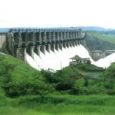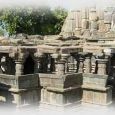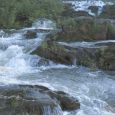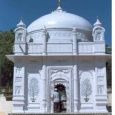Banswara
Advertisement
Getting There
By Air
Udaipur and Indore is the nearest airport. From airport, you can either board a train, bus or a taxi to land on the magnificent city of Banswara.
By Bus
Rajasthan, Gujarat and Madhya Pradesh roadways operates frequent busses and connects it to other major cities of India which includes Ahmedabad, Baroda, Ujjain, Jaipur.
By Train
Ratlam in Madhya Pradesh is the nearest railway station which connects Banswara with all other major cities of the country.
Geographical Contours
Banswara’s terrain is ideal for those interested in outdoor life as the eastern part of the district is scattered with the Aravallis, incongruous with the sands and stones usually associated with Rajasthan. Banswara’s beautiful landscape may be divided into two regions – the eastern and the western. The former consists of the Aravallis while the western are plain agricultural lands. The fruit trees mainly include mangoes and date palm (khajur). The forests here are of tropical dry deciduous variety that includes teak found on the slopes of Aravallis. Axlewood, rosewood and common bamboo are the other varieties.
{short description of image}
¤ Flashes from the Past
Present Banswara comprises of the erstwhile territories of the princely state of Banswara and the chieftainship of Kushalgarh. Earlier Banswara formed a part of the Bagar or Vagad region with its capital at Vatpadrak, presently Baroda (see Dungarpur for more details). The area witnessed the developing civilization of Ahar, which dates back to neraly 4,000 years. However, the early history of Bagar is obscure. A horde of silver coins belonging to 181 to 353AD was unearthed at village Surwaniya suggesting the rule of the Sakya clan over the district. After the dissolution of the Kushana empire some Sakya chiefs continued to rule the Malwa region. They were the Kshatrapas, of whom the last ruler Rudradaman III was defeated by the Gupta king Chandra Gupta Vikramaditya II in 388AD. The Guptas were then defeated and ousted by the Hun invader Toramana in 499AD. The obscurity of Banswara history now comes into play with absolutely no details of the five intervening centuries.
Around the beginning of the 10th century, the region passed under the Paramaras who had their capital at Arthuna. The Paramaras were in turn driven out by Samant Singh of Mewar who took over the region around 1179AD. Bagar then passed on to the Solankis and the Chalukyas of Gujarat whose hold continued till 1196AD. From this time onwards till about 1859AD the history of this region is that of skirmishes among various states and principalites until the Britishers gained its administrative control. After Independence, in the year 1949, Banswara and Kushalgarh were merged into the Indian Union and was carved out as a separate district in Rajasthan. Presently, the administrative divisions include Ghatol, Ghari, Banswara, Bagidora, Kushalgarh, and Sajjangarh.
{short description of image}
¤ Major Attractions of Banswara
Shri Raj Mandir
Shri Raj Mandir is the 16 th century old city palace which spans over a large area and is a perfect example of old Rajput architecture. The palace was purchased by the royal family. You need to have an official invitation in order to enter the mandir.
Kagdi Garden
This is an enchanting fountain gardens which overlooks the Kagdi Lake and is a part of the Mahi Bajaj Sagar project.
Anand Sagar Lake
This is an artificial lake and is also known as the Bai Talab. This lake have been constructed by Lachhi Bai of Idar, the Rani of Maharawal Jagmal. The lake is beautifully adorned by " Kalp Vriksha" which is couple of holy tree and it fulfills the desires of every travellers.
Dialab Lake
This is another tourist attractions of Banswara and most of it is covered by a lotus flower. On the banks of Dialab lake, you would be able to see, Badal Mahal, the summer residence of the former rulers.
Abdulla Pir
CheetalThis is a Muslim shrine of Bohra saint and is mostly visited by Bohra Muslims who visit this place during URS. The travellers come from all over the world.
Wildlife Attractions
The wildlife here includes a large variety of animals, reptiles and fish. Chinkara (Indian gazelle), chowsingha (four-horned antelope) are spotted very rarely. Sambhar (Asiatic deer), wild boar (Susscrofa cristatus) and cheetal (spotted deer) which used to frequent these forests have now become migrated to greener pastures. Squirrels (Funamblous palmarum) and reptiles like lizards and snakes of various types are found almost in all parts of the forests. Birds are common and varied. Jungle crow (Corvus macrorhynchos), red vented bulbul (Pycnonotus cafer), myna (Acridotheris tristis), red spur fowl and black drongo (Dicrusrus adsimilus), grey shrike, green bee eater, parrot, house sparrow, purple sun bird (Nectarina asiastica), wood pecker, white spotted fantail can be spotted here. Major carps, catfish and other fish varieties are abound in the waters of Mahi, the Anas, the Chap and the Airav. Among the major fish rohu, khuris or sarsi, kalbose or kalot are found while the cat variety includes patola, girai, saul lanchi, singhara and singhi.
{short description of image}
¤ Excursions
Mahi Dam
Mahi Dam is one of the major attractions of Banswara. The dam was constructed under the Mahi Bajaj Sagra Project, various dams and canals have been constructed over a enticingly enchanting scenic surrounding. Near the dam, you could locate the enticing garden.
Paraheada
Just 22 kilometers from Banswara, you have the Paraheada in the Garhi tehsil. This is an enticing Shiv temple of 12 th centuary.
Talwara
Temples of Sun god, Lord Amaliya Ganesh, Laxmi Narayan Temple, and Jain Temple of Sambharnath make Talwara a religiously important site. The idols in these temples are carved in local black stone and are beautiful to look at.
Tripura Sundari
Dedicated to Goddess Tripura Sundari, or Turtia Mata, the temple here has a beautiful idol of black stone having 18 hands, each carrying a different symbol. The goddess is seen riding a tiger. It is said to be one of the 'Shakti Peeths' of the Hindus having divine powers.
Talwara
Just 15 kms from the Banswara is another historical city, known as Talwara. The city is opulent and carries some beautifully carved monuments. The famous temples of Talwara are Gokarneshwar Mahadeva Temple, Laxmi Narain Temple and Jain Temple of Sambhar Nath.
Festivals With A Difference
Banswara Festival Festivities form the spine of Indian lifestyle which very few Indians can do without. Likewise, a number of important festivals are celebrated with much joy and gaiety at Banswara. Traditional and cultural activities play an active role in these festivals in which the tribal population adds to the fun and merriment. During these tribal festivals the Bhils worship several deities, the principal ones being Kharo Dhain, Moto Dharm and Bhalo Dharm. The colourfully attired tribals perform various dances. The Gair dance is performed more boisterously than the others with the help of sticks and swords while moving to the tunes of the beating drum in a circular fashion. The colourfully attired Bhils, the warrior tribe, carry swords and sticks that form an integral part of their means of enjoyment. Deevo, another important event in the lives of the locals here is the festival of lamps. Unlike Diwali, the Hindu festival of lights, Deevo is dedicated to the worship of animals; cows and bullocks are held sacred as most festivals in India have a distinctly agricultural origin. It falls on the new moon day of of the Hindu month of Shravan (Jun/Jul). Bullocks are first washed and then worshipped, reflecting upon the bond established by the human beings with other living beings.
Ghodi Ranchodji Fair of Banswara
The fair is held on the bank of river Mahi near the village of Motagaon. It is annually held in the month of Magha (Jan/Feb) in the temple of Ranchodji, dedicated to lord Krishna. The temple has a famous namesake – the Ranchodji temple in Gujarat. The fair is attended mostly by the tribal Bhils.
Information not available





